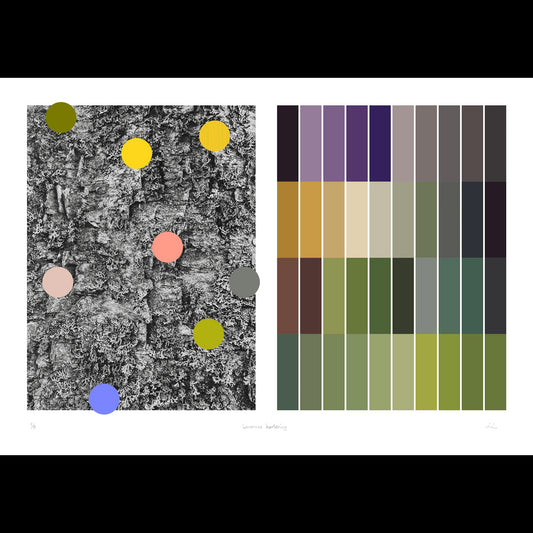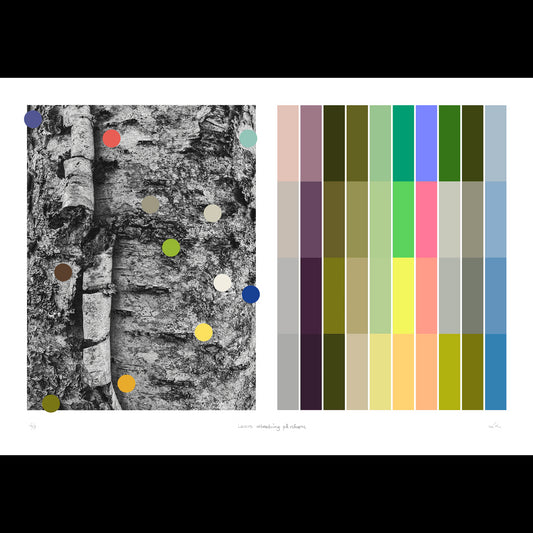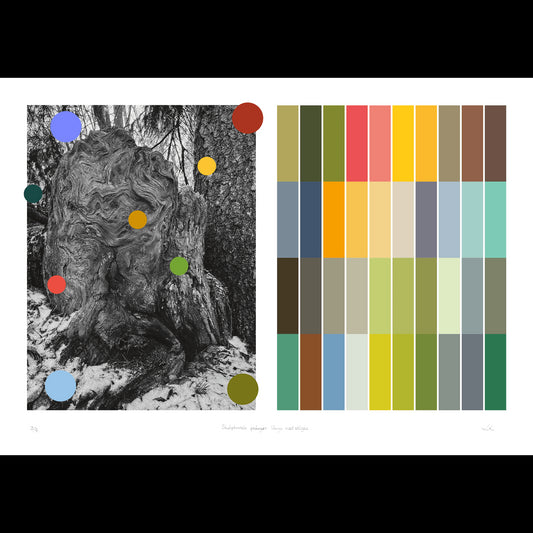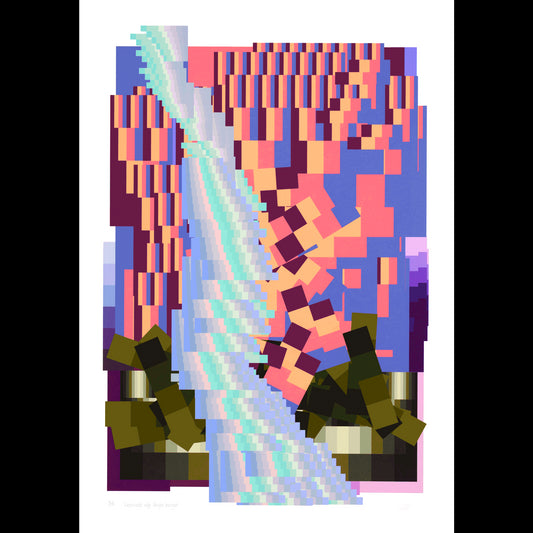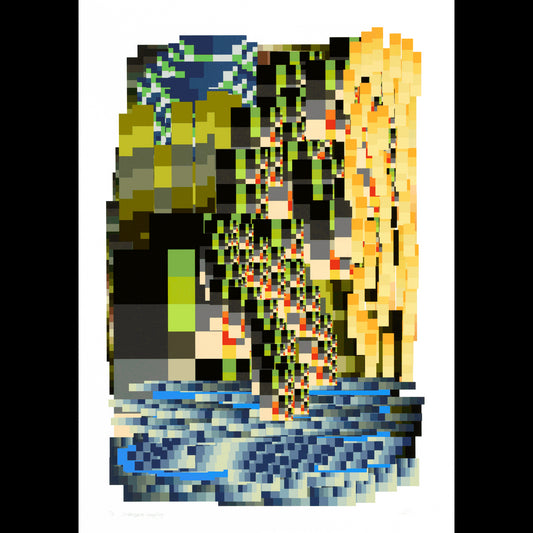Johan Löfgren investigates how nature communicates through color, form and change. Through a kind of mapping of the alphabet of plants, he approaches questions of vision and interpretation. It is an attempt to give form to that which cannot always be translated.
The books Naturens kolorit (Nature's colors) and Tills solen bara blev sol (Until the sun became just sun) are parts of a living color archive. They are both publications and working materials, where each color sample becomes a fragment in a larger picture. Through them, an attempt is being made to understand nature's wordless language, where what happens on the margins of our focus emerges – the slow, the fleeting, that which may soon be gone.

In the new work Barken (the Bark), the gaze is directed towards the surface of the trees as carriers of time and place. The bark becomes a map of change, a color archaeology where the traces of the landscape still remain, silent and present.
The Bark
The place shapes the bark.
The lichen spreads in thin layers.
Maps. Signs.
What the tree did not chose. But carries anyway.
A silent language.
Light. Time. Slow change.
Maybe it will disappear. The vantage point. The language.
But right now it is here.
Says. Without words.
Here it was.
This is what it looked like.
When you get close.
You see the patterns.
Maps. Fingerprints. Or something else.
Traces of rain. Drought.
Cracks. Furrows. Flaking layers.
Not letters. Just lines.
In the surface of the bark, the place lives.
The wind from the north. The slope of the ground. The shadow from the tree at the side.
The years. Time.
Moving slowly. Without haste.
For many years, Johan Löfgren has devoted himself to a quiet observation of the colors and patterns of nature, what he himself calls color archaeology. In his art, he has also turned his attention to the era of the earliest computer games. Regardless of the motif, he devotes himself to a painting that is done with a computer instead of with a brush and paint. In classic art historical terms, one could call him a contemporary portrayer, both in terms of what he depicts and with which tools.


